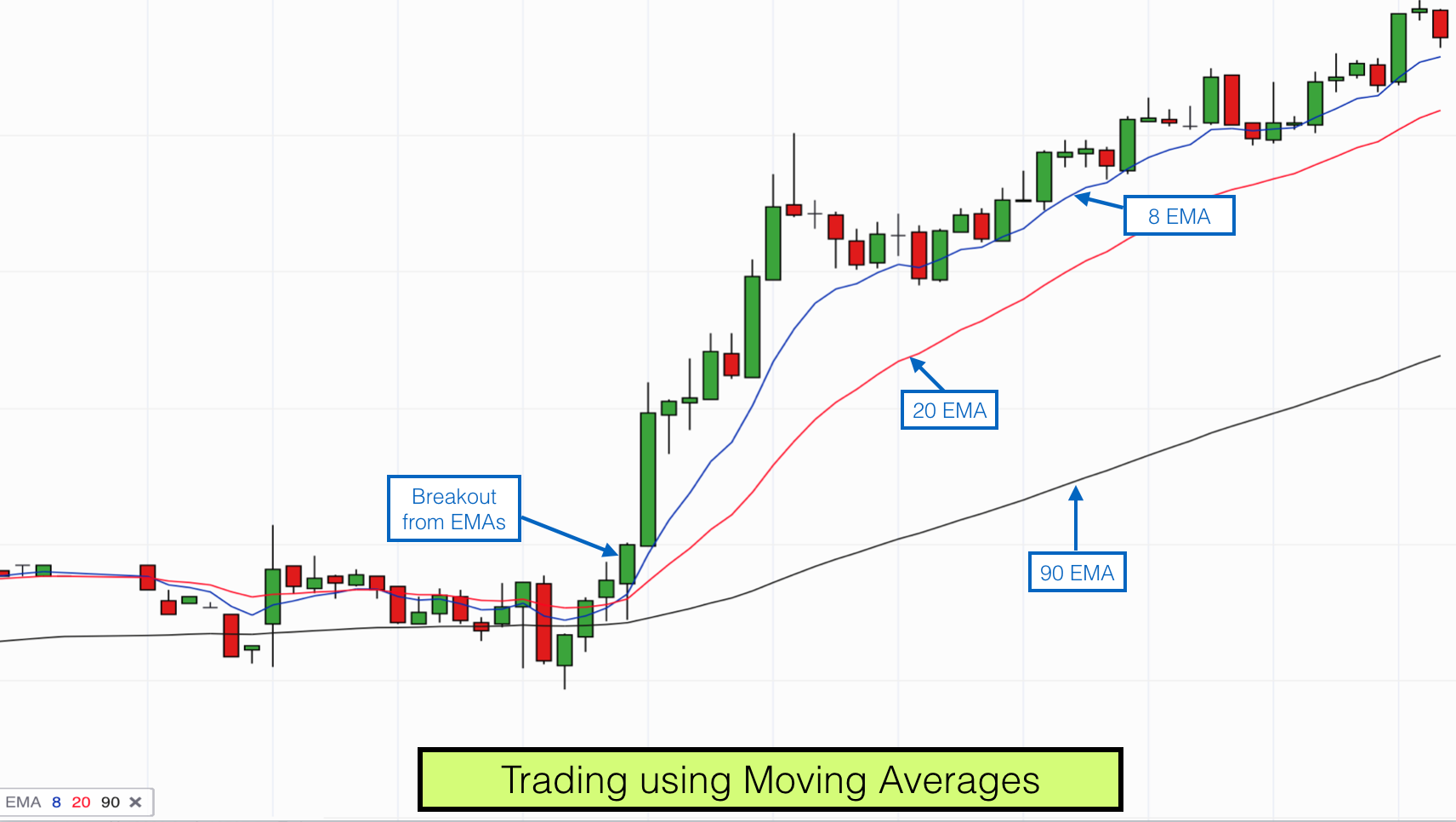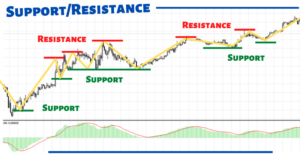Moving averages (MAs) are a cornerstone of technical analysis, a method used by traders to analyze price movements and identify potential trading opportunities. By smoothing out the volatility in price data, moving averages reveal the underlying trend and can offer valuable insights for traders looking to enter or exit positions.
This article delves into the world of moving averages, exploring how traders can utilize them to:
- Identify Trends:
- Pinpoint Potential Entry Points:
- Understand the Limitations of Moving Averages:
1. Identifying Trends:
The most basic function of moving averages is to identify the direction of the trend in an asset’s price. This is achieved by analyzing the relationship between the current price and the moving average line:
- Upward trend: If the price consistently trades above a rising moving average, it generally indicates an uptrend.
- Downtrend: Conversely, if the price consistently trades below a declining moving average, it suggests a downtrend.
- Range-bound market: When the price oscillates around a horizontal moving average, it often signifies a range-bound market, where the price fluctuates within a specific price range.
Types of Moving Averages:
There are two main types of moving averages used by traders:
- Simple Moving Average (SMA): This is the most basic type, calculated by averaging the closing prices over a specific period (e.g., 50 days, 200 days).
- Exponential Moving Average (EMA): This type gives more weight to recent prices, making it more responsive to new information and quicker to reflect changes in the trend.
The choice between using an SMA or EMA depends on the individual trader’s preferences and trading style. SMAs can be helpful for identifying longer-term trends, while EMAs can be better suited for capturing shorter-term trends and potential reversals.
2. Pinpointing Potential Entry Points:
Once a trend is identified, moving averages can be used to pinpoint potential entry points for trades. Here are two common strategies:
- Crossovers: This strategy involves observing when the price crosses above or below the moving average line.
- A bullish crossover occurs when the price crosses above the moving average, potentially signaling a buying opportunity in an uptrend.
- Conversely, a bearish crossover occurs when the price crosses below the moving average, potentially indicating a selling opportunity in a downtrend.
- Price-MA relationship: This strategy involves analyzing the distance between the price and the moving average. In an uptrend, traders might look for buying opportunities when the price dips closer to the moving average, suggesting potential support. Conversely, in a downtrend, they might look for selling opportunities when the price rallies closer to the moving average, indicating possible resistance.
It’s important to remember that crossovers and price-MA relationships are not foolproof signals, and confirmation from other technical indicators is often recommended before entering a trade.
3. Understanding the Limitations of Moving Averages:
While moving averages are valuable tools, they have limitations that traders should be aware of:
- Lagging Indicator: Moving averages are lagging indicators, meaning they react to price changes with a delay. This can lead to missed entry or exit points during volatile market conditions. Read more: Leading vs Lagging Indicators
- False Signals: Crossovers and price-MA relationships can generate false signals, leading traders to enter or exit positions at inopportune times.
- Limited Information: Moving averages only consider price data and don’t take into account other factors that can influence market movements, such as news events or economic data releases.
Additional Considerations:
- Moving Average Length: The length of the moving average can significantly impact the results. Shorter MAs are more responsive to short-term price fluctuations, while longer MAs provide a smoother picture of the longer-term trend.
- Combining with Other Indicators: Using moving averages in conjunction with other technical indicators, such as Relative Strength Index (RSI) or MACD, can offer a more comprehensive view of the market and help confirm trading signals.
- Backtesting and Paper Trading: Before implementing any strategy based on moving averages, it is crucial to backtest it on historical data to assess its effectiveness and practice using it in a simulated environment through paper trading.
Moving averages are powerful tools that can help traders identify trends, pinpoint potential entry points, and make informed trading decisions. However, it’s essential to understand their limitations and use them in conjunction with other technical analysis tools and proper risk management practices.
Let’s Manage Your Forex Funds With Fx Pips Guru!
Fx Pips Guru is a forex fund management company managing client’s funds based on monthly profit share. Let’s do Live Chat with our experts.




